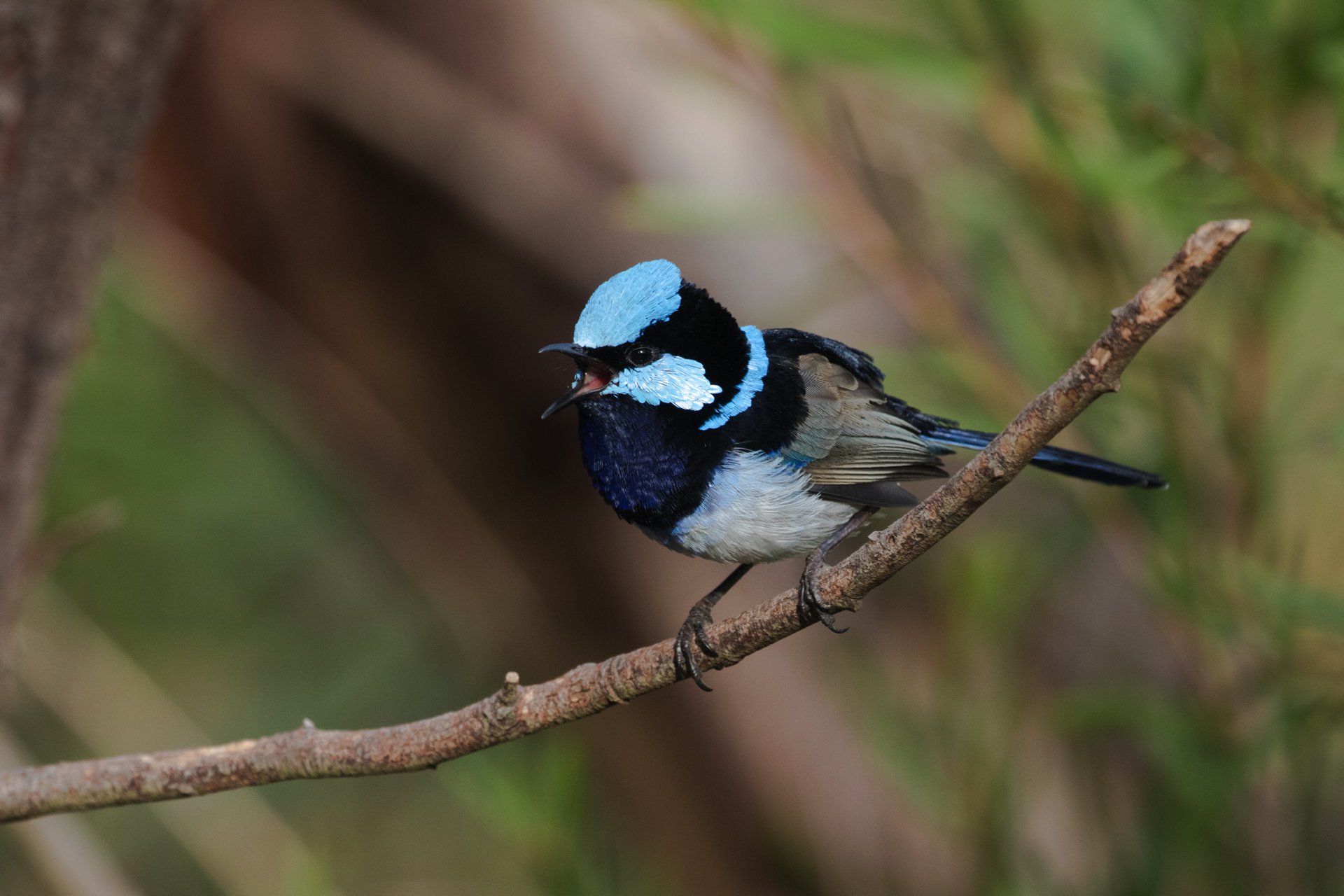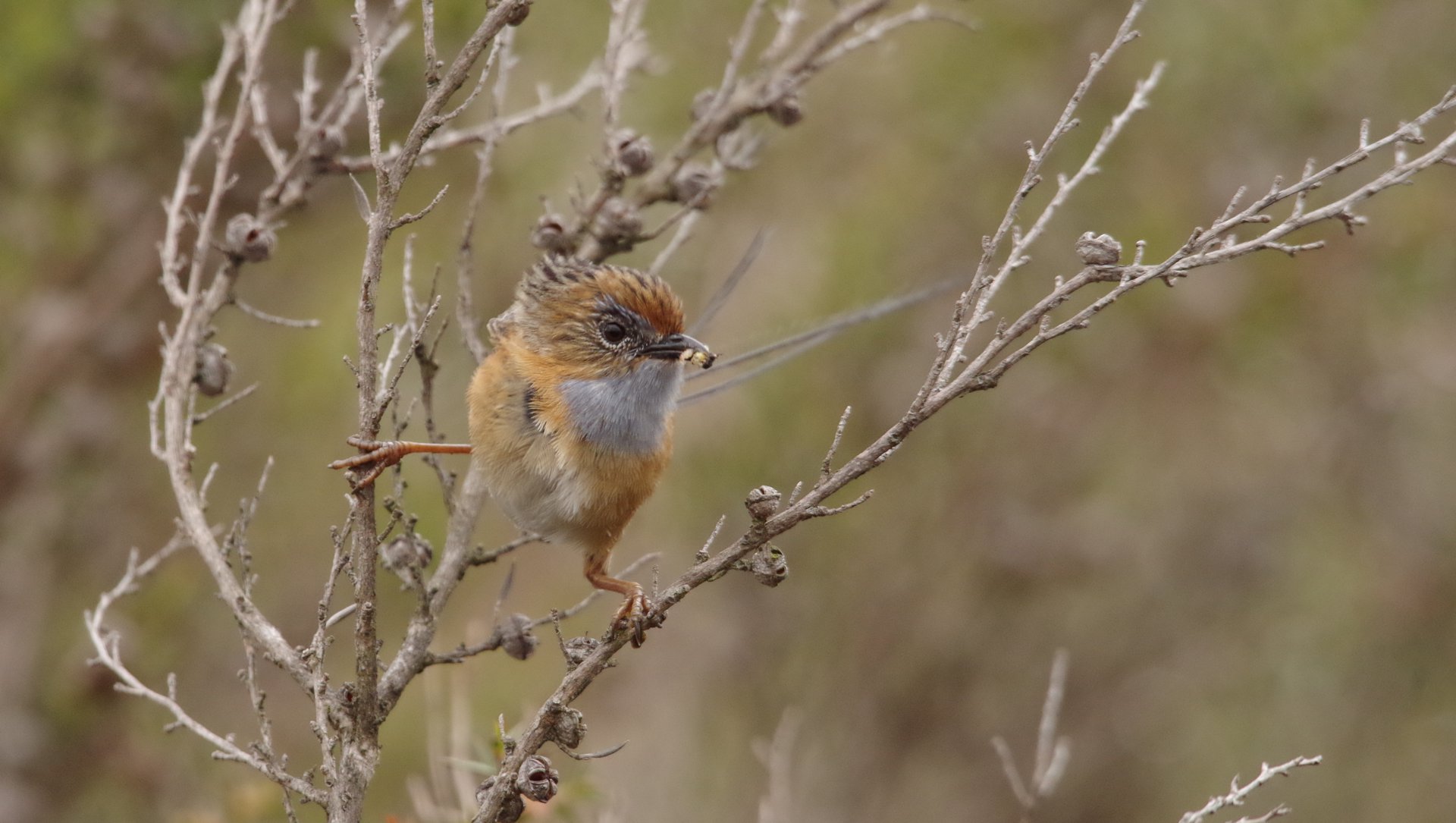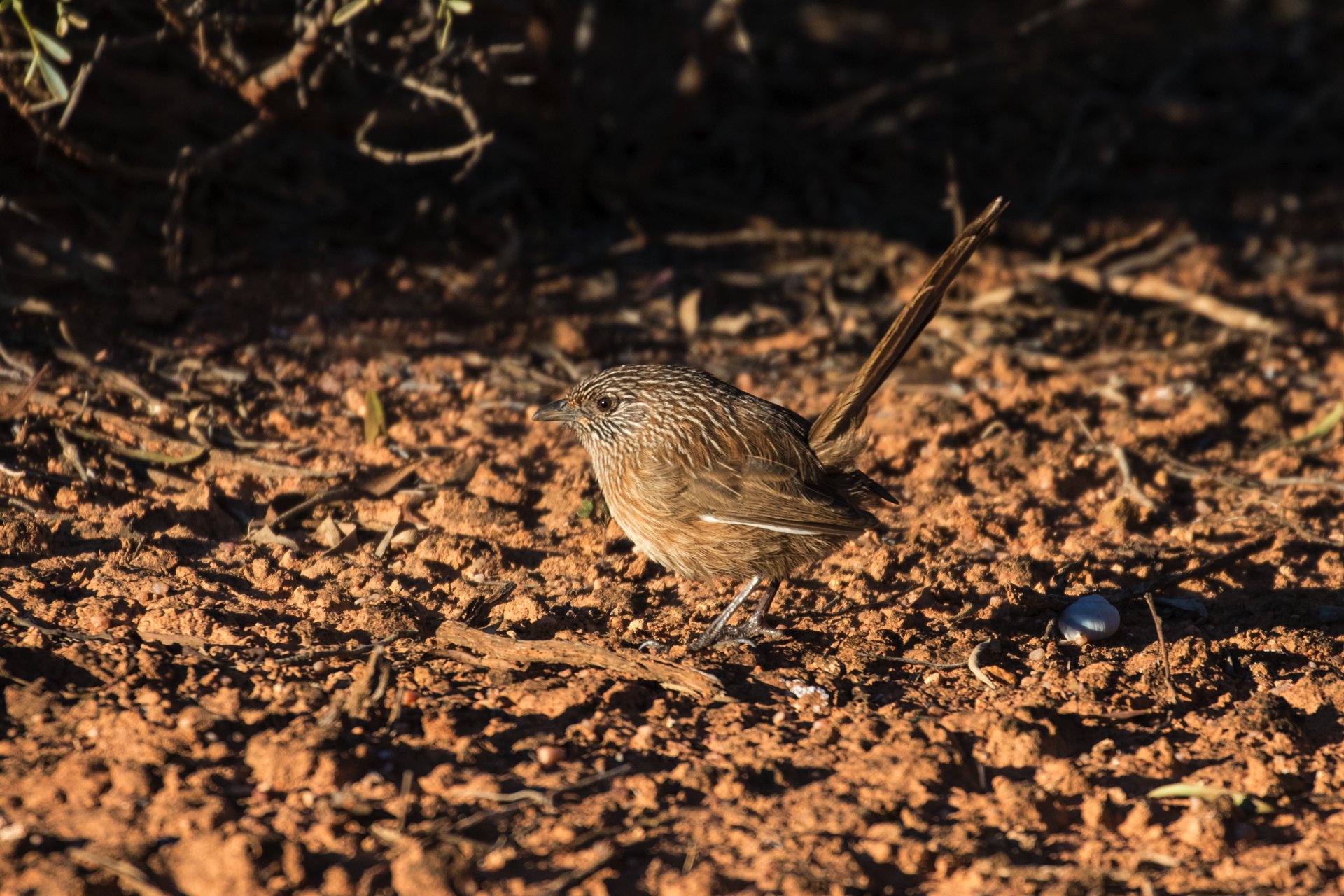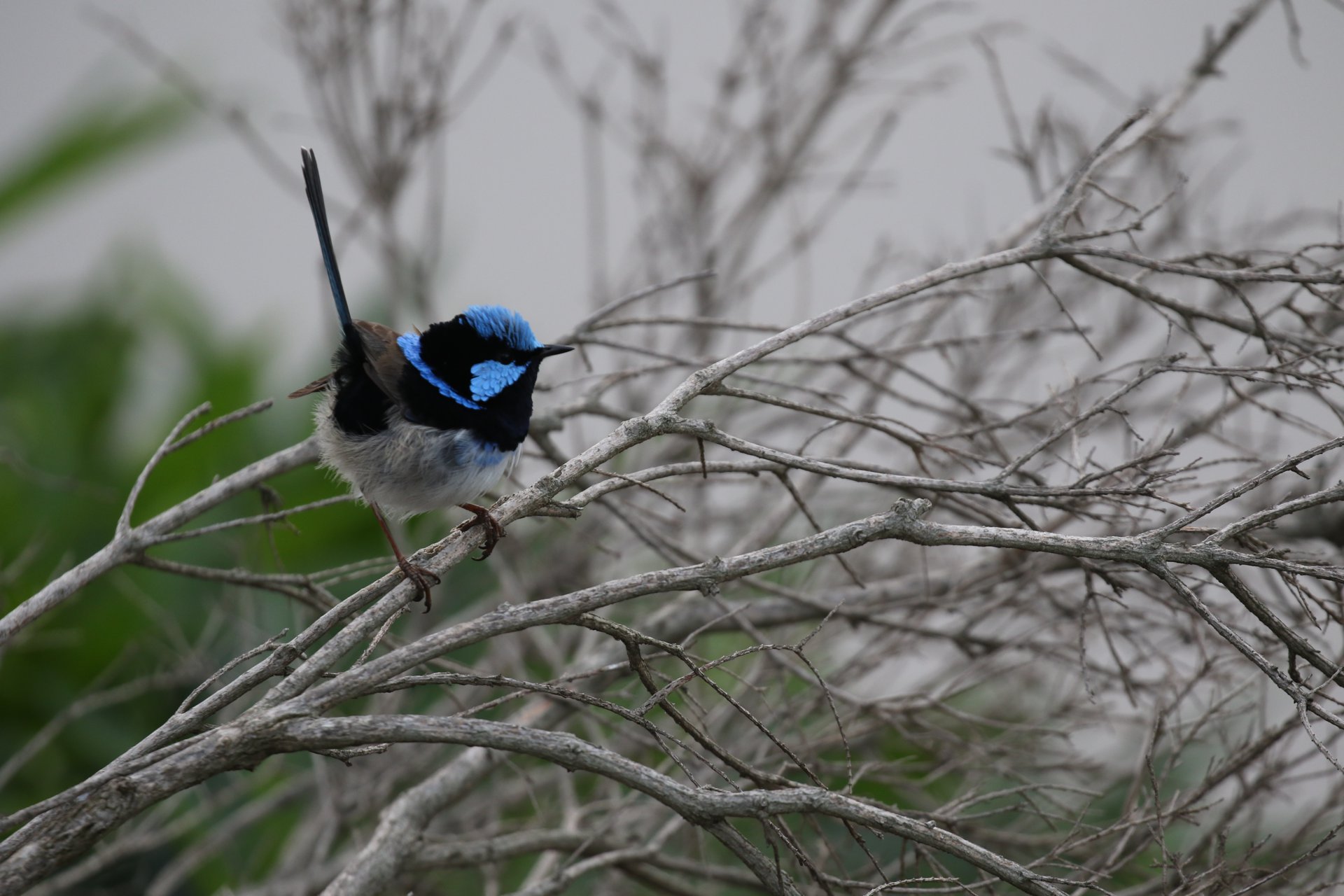I remember sitting with my cousin in my aunty and uncle’s backyard when I was in my teens, watching the local birds milling around the garden and bathing in the bird bath. The backyard was providing plenty of thrills for us novice birdwatchers. We watched the interesting behaviours and interactions of the birds and identified new species.
Among the backyard birds was a family of Superb Fairy-wrens. A brightly coloured male flashed his iridescent blue and black, while the more subtly coloured females zipped about chasing each other. This was my first clear memory of an interaction with a group of birds that has captured my fascination and taken me to wonderful places, and it provided the initial spark for my many journeys in search of the malurid wrens.

The fairy-wrens are in the family Maluridae, which in Australia includes the emu-wrens and grasswrens, as well as a number of species from New Guinea. The malurid wrens are small-to-medium sized birds with long legs and tails and short rounded wings. Male fairy-wrens in breeding plumage sport bright colours: combinations of blues, whites, blacks, purples and reds. Grasswrens have more cryptic plumage and a much more secretive personality to match, being draped in browns, rufous and greys often streaked with white. The tiny, dainty emu-wrens get their name from their six extremely long tail feathers that resemble those of an emu. The malurid wrens have attracted hordes of followers, from elderly ladies watching the family of fairy-wrens flitting about their gardens to hardcore birders travelling the deserts of Australia hoping to get a glimpse of a grasswren.
Over time, I saw more fairy-wrens during my travels, mainly around South Australia, from White-winged Fairy-wrens in the Flinders Ranges to Splendid Fairy-wrens on northern Eyre Peninsula. They always provided a thrill.
The next of the malurid wrens I encountered was nowhere near as forthcoming as the fairy-wrens. On an annual trip to Coffin Bay in South Australia, I bought a book, Birds of Southern Eyre Peninsula by Gill and O’Connor. One bird in the book caught my eye: it had no picture, just a line drawing. It was a Southern Emu-wren, which lurked somewhere in the cutting grass swamps near Coffin Bay. Emu-wrens are smaller than fairy-wrens and live in thick vegetation like heath or swamp, or in spinifex in the case of the two inland species. They have stubby little wings and a feeble high-pitched call which many of the aurally challenged cannot hear. It took me three of these annual trips to finally see these birds. After spending hours sitting in a swamp (it’s actually not as bad as you think), I heard from behind me a high-pitched call. I turned around slowly to find a small party of these delicate little birds making their way across a narrow opening in the vegetation. The exhilaration of being in the presence of such beautiful little creatures, though it was probably only for ten seconds, was ample reward for the hours of waiting. I was hooked.

While looking for the spinifex-dwelling Mallee Emu-wren in north-west Victoria, I instead encountered the next group of the malurid wrens: the grasswrens. Wandering along the sandy tracks of Hattah-Kulkyne National Park, we heard a call from among the spinifex and mallee eucalyptus. I saw a figure race between two hummocks of spinifex, pausing briefly in the shadows while my camera was firing away. Moments later it was gone, but I knew what it was: a Striated Grasswren. As we walked further along, one of the grasswrens popped up onto a stick to investigate, giving me a stunning view before disappearing into the mallee. Most grasswrens are hard to find and require travel to some very remote areas of Australia, but the thrill of seeing them after planning an outback adventure and working out exactly where the birds are likely to be – sometimes with the help of some sheer luck – is priceless. Within months I had planned trips to Eyre Peninsula and the Gawler Ranges to try to find more.

Searching for malurid wrens has taken me all over – through the hills and swamps of southern Australia and the central deserts – and as a result I have seen fantastic landscapes, brilliant plants and plenty of other fascinating creatures. Whatever your disposition, backyard birdwatcher or hardcore adventurer, the malurid wrens have something for you.
Banner image courtesy of Rowan Mott.


Leave a Reply